[UPDATED 11 January 2020, 27 February 2020, and 4 August 2020]
Segway has made headlines worldwide with the S-Pod, a new self-balancing seated transporter.
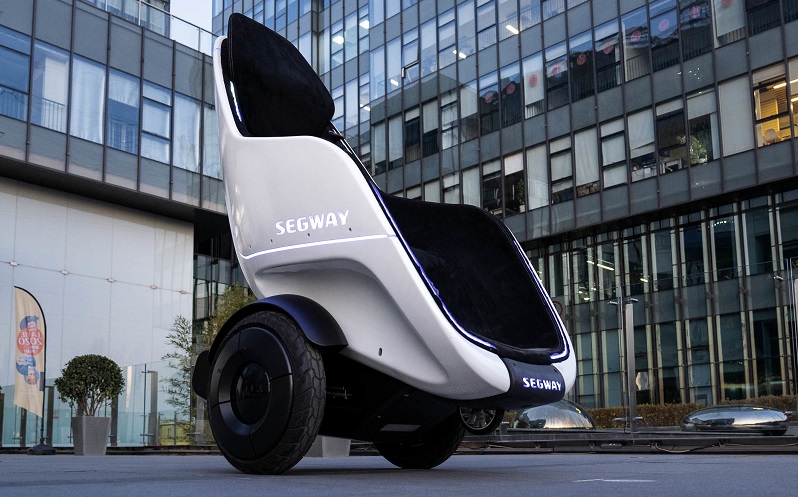
Want to see how it goes? The best video footage of it being used by a reporter can be found at here at tech news site The Verge. Reports suggest the S-Pod may be launched next year (2021).
The Guardian has ranked the S-Pod at #3 in their list of Top 7 Standout Gadgets.
TIME Magazine rated the S-Pod at #5 in their Top 25 best-of list.
For other video coverage see here or Gizmodo’s less interesting video here accompanied by a good article that includes a description of what it is like to ride. Here are some edited excerpts from Gizmodo’s article:
Unlike the original Segway…there’s no leaning forward or backward—the S-Pod shifts your centre of gravity automatically for you. Climbing into the chair feels a little weird, sort of like falling into a moving recliner, but I never felt like I was in danger of toppling out. The thing is also slightly smaller in person than you’d think based on the pictures. Think of a slightly bigger gaming chair, complete with RGB lighting, that you can drive.
Learning to drive the S-Pod was quick. All it took was a 5-minute tutorial. Similar to many electric wheelchairs, you push the joystick forward to move forward and accelerate. You push back to brake or move in reverse. Turning left and right will spin you in a circle while pushing forward at an angle will help you turn….
….Even though Segway capped my demo S-Pod at 12km per hour, it felt like I was whizzing down the track at a semi-dangerous speed….Segway says that while the max speed will be 38 km/h…depend[ing] on local regulations and what they’re being used for.
While the S-Pod feels like it could be an accident waiting to happen….Segway told me the company thought long and hard about safety. For example, on turns, the S-Pod will automatically slow down so you don’t flip out of the chair….
…There’s also RGB lighting on the back that acts like a blinker, so people will know which way you’re turning. That’s because the target use-case is similar to the original Segway—things like tours and making it easier to traverse longer distances in public areas. (Note: the S-Pod, while probably helpful for folks who can’t walk for long periods of time, is still targeted at able-bodied folks and is not intended to be a replacement for wheelchairs.) All-in-all, I think most people would enjoy scooting around in one of these.
On 27 February 2020, Segway presented the S-Pod to Disney senior executives at their ‘Best of CES’ event. Here is a photo from Segway’s Facebook page:
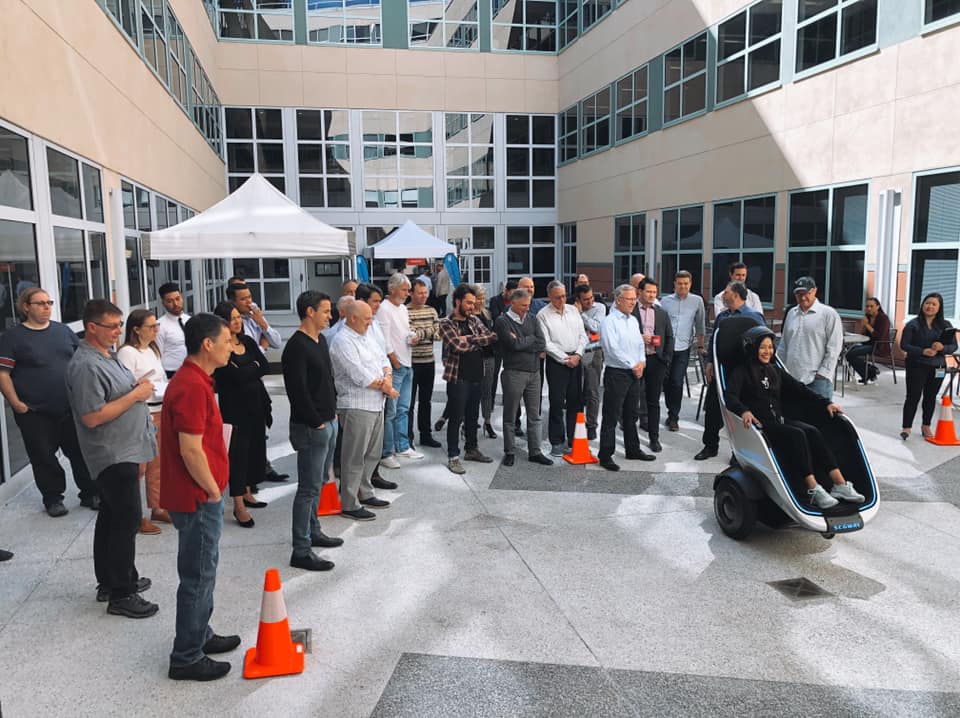
The S-Pod is based on Segway’s P.U.M.A. (2009) here and its direct evolutionary descendents – three Segway EN-V series of prototypes (2010-11). See our earlier articles about EN-V here, here and here – that were developed in conjunction with General Motors.
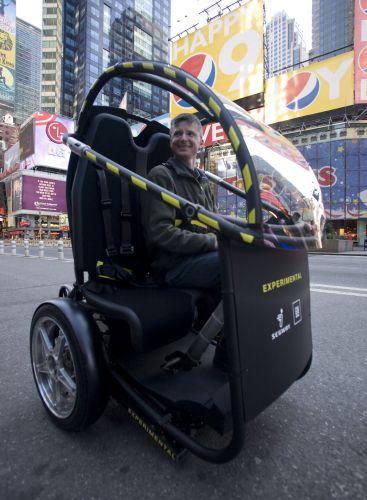
Here are images of two of the three EN-V prototypes first shown at the Detroit Motor Show and the Worlds Fair in Shanghai circa 2010-2012. At the time, many press articles failed to understand the benefits of a two-wheeled, self-balancing platform for carrying seated occupant(s) versus small, traditional four wheeled vehicles. Yet the benefits of half the number of wheels and motors, plus simplified steering were quite obvious to engineers.

Sometimes it takes a decade or more for the world to catch onto a really good idea. For example, see our articles:
Auckland in Fifty Years (or, Predicting the future: Part 1)
UniPod pre-dates UNI-CUB by 33 years (or, Predicting the Future: Part 2)
“In the future, we will all drive standing up” (David Byrne, Talking Heads) (or, Predicting the Future: Part 3)
We made further predictions in our 2011 article Segway PT and the next 10 years. Segway New Zealand’s prediction for 2020 is the boom in micro-mobility that is has been focused on KickScooters for the last two years will, three years from now, shift rapidly across to a focus on self-balancing transporters of a variety of sizes and configurations. As users look to replace their worn KickScooters many will seriously consider self-balancing alternatives because for a significant portion of users (perhaps even the majority) they are a better solution – they just don’t realise it yet.
Yet technological predictions remain subject Amara’s Law, which states that we overestimate the effect of many technologies in the short run but underestimate them in the long run. It is often easier to predict what may happen than when. This ‘law’ is touched upon in one of Segway NZ News’ most popular articles of all time: Justin Bieber really loves his Segway PTs – a tipping point in the evolution of attitudes towards Segway PTs. It includes a favourite image of actor Michael Douglas from Wall Street holding a “brick” cellular phone and asking “Wait you’re breaking up – WTF is an eye phone” that sums up just how quickly things can change. Yet the rise of the self-balancing machines is proving to take a little longer than Dean Kamen originally imagined.
The P.U.M.A. and EN-V were based on a platform where the platform that carries the rider(s) can slide across the PowerBase. This movement of mass in a forwards or backwards movement is equivalent to a standing rider upon a Segway PT leaning forwards or backwards to control speed.

But “equivalence” does not mean it is exactly the same thing, and these two methods of generating locomotion result in important practical differences that are not necessarily obvious at first glance.
Below is a video that shows the two methods operating side by side. But first, an introduction from Stanley Innovation’s website (this is a US company that utilises, further develops and innovates custom implementations of Segway’s RMP Robotic Mobility Platforms). This introduction is about a prototype called the Segway MINI-PUMA.
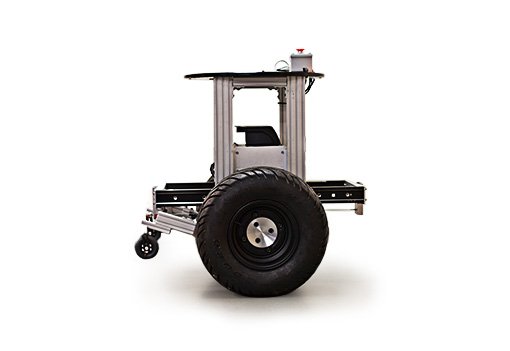
MINI-PUMA
The next evolution in balancing technology.
Mini-PUMA was a prototype built to showcase the flexibility of the RMP architecture to add additional degrees of freedom quickly and easily. The code base for the Segway RMP is a refined version of the code that made the GM EN-V (PUMA) project possible. The ability for Mini-PUMA to transition from passive stability to active stability (balancing) allows for fully autonomous behavior not found in any other robotic system. The sliding degree of freedom found in both PUMA and Mini-PUMA provides a stable level platform during acceleration and deceleration.
This link is to a video from Stanley Innovation (57 seconds) that shows the Segway MINI-PUMA and a Segway RMP-200 model moving around together. It is immediately obvious that the MINI-PUMA can take off more quickly. It does not need to tilt to begin moving, and the platform can remain horizontal during movement.
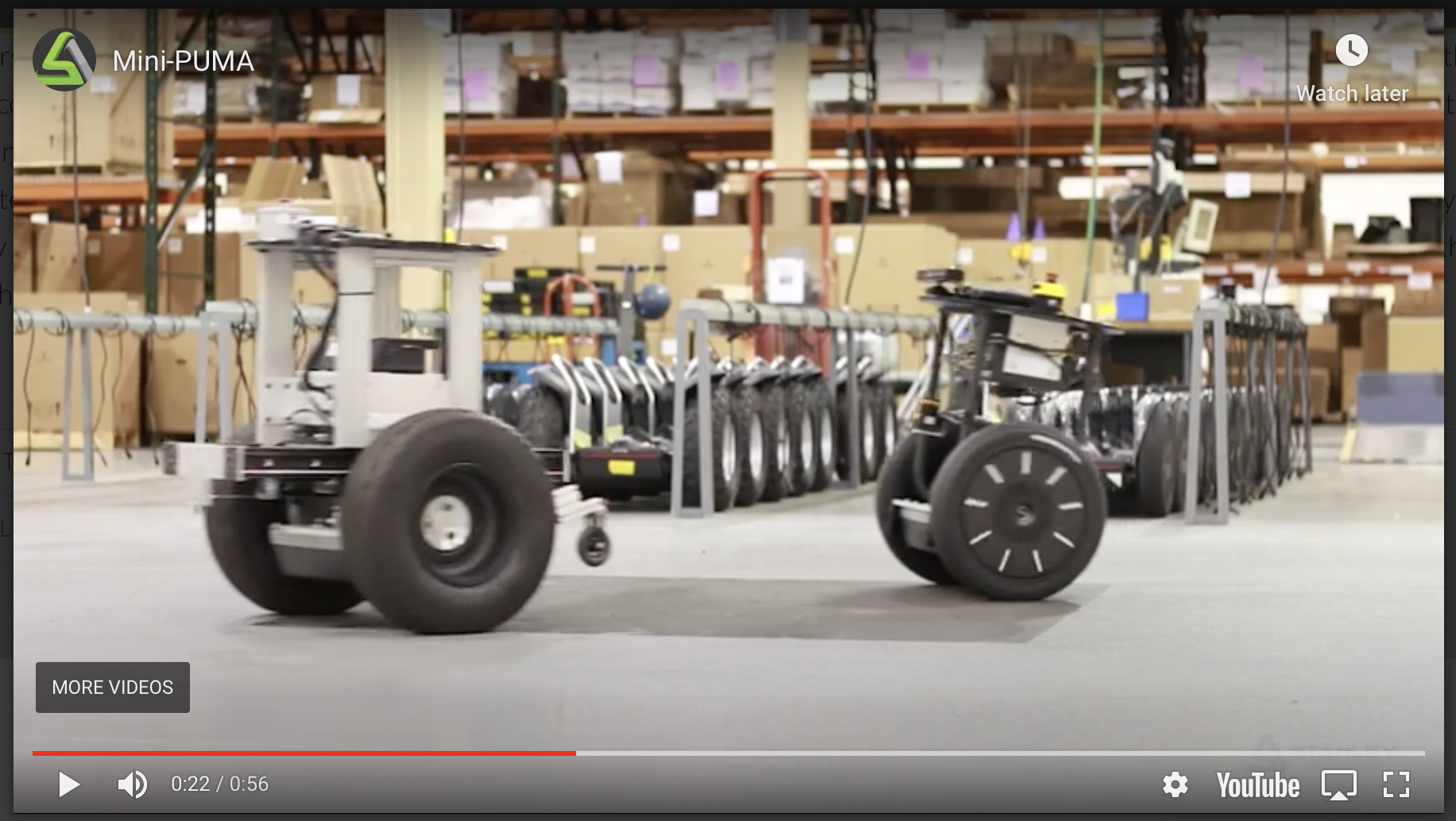
TRACKING DOWN THE ORIGINAL PUMA
Segway New Zealand’s Philip Bendall got to see and sit in the original P.U.M.A. prototype while visiting Segway-Ninebot’s Beijing HQ during September 2019. Let’s compare the S-Pod with the P.U.M.A. starting with a photo of a line-up of several of Segway’s unusual products (the P.U.M.A. is on the right).
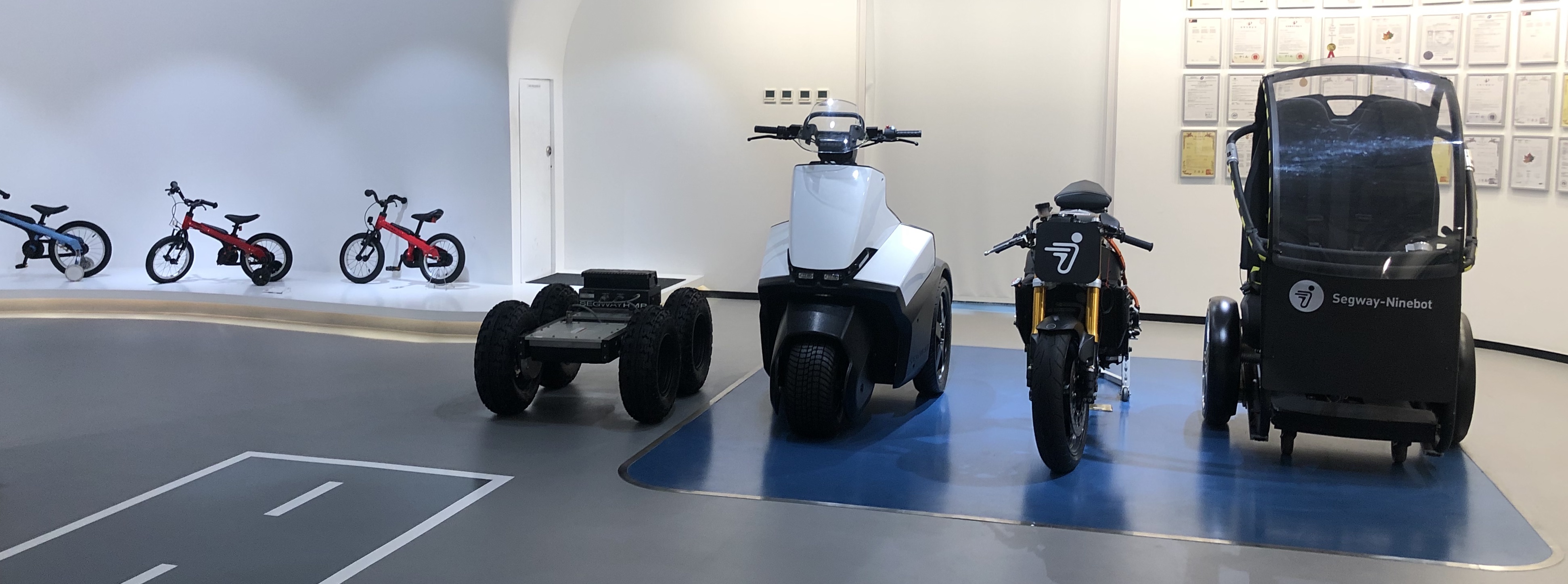
In addition to the two large wheels for self-balancing operation, the S-Pod has one “landing wheel” on the front for when it “kneels down” when the rider mounts/dismounts, and a pair of small wheels at the rear. The P.U.M.A. had a pair of small landing wheels at the front (these can be seen in the lineup photo above)…and also a pair of wheels at the back.

Unlike the joystick-controlled S-Pod, the original P.U.M.A. had a steering wheel with buttons to transform from “kneeling” to self-balancing position.
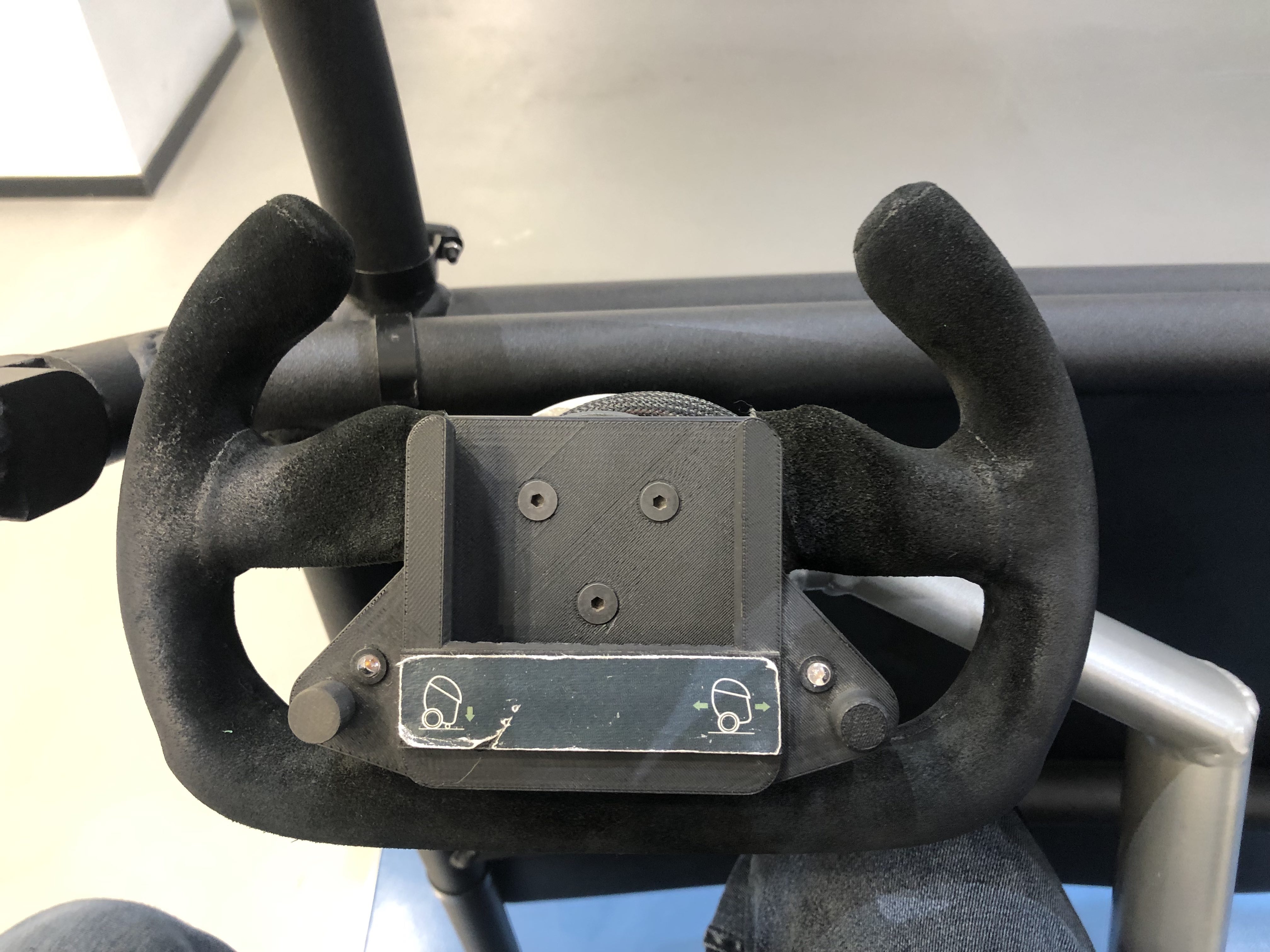
This is a close-up of the P.U.M.A. wheel and gearbox (which does not appear to be a gearbox from a Segway PT).

Here are instructions for use (in Chinese):
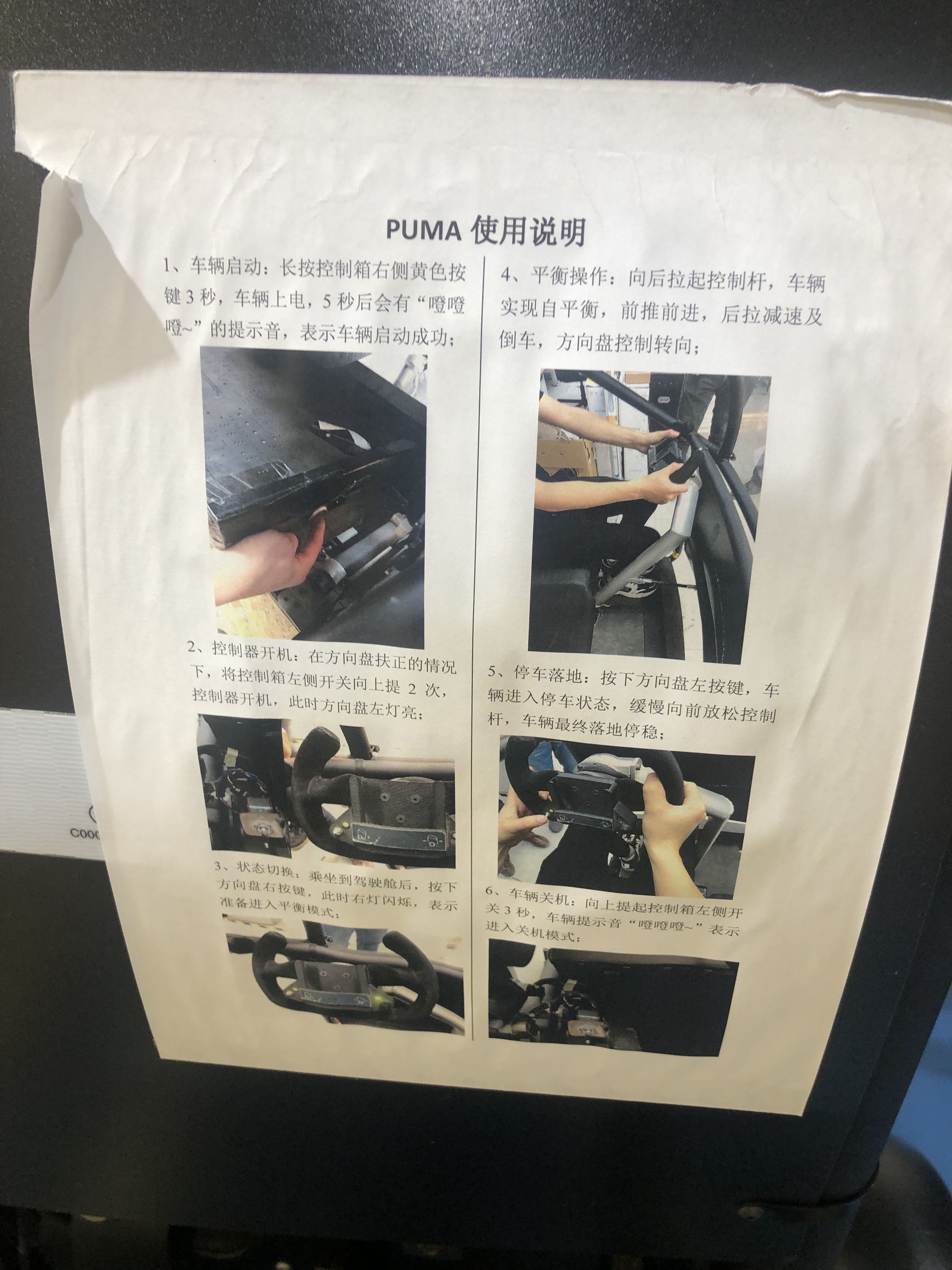
And finally the author looking very excited to be sitting in the original P.U.M.A.
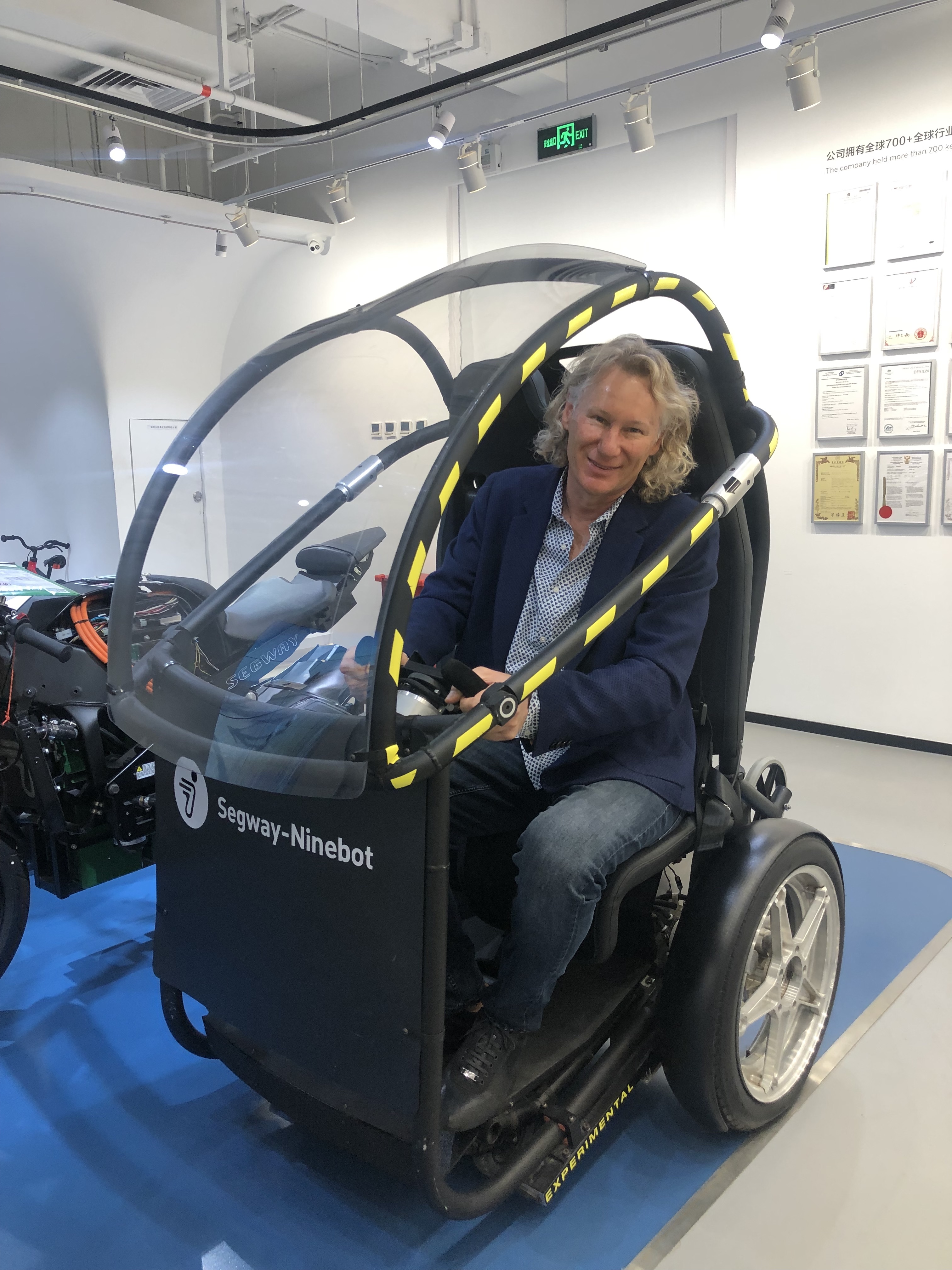
For Philip, sitting in the P.U.M.A. and riding the Segway Centaur prototype rated right up there with being one of the first persons to fly the Martin Jet Pack in 2009.

![[Updated] Segway S-Pod revealed at CES (info, videos and more – including rare photos of P.U.M.A. prototype)](https://segwaynz.files.wordpress.com/2020/01/transpo-segway-s-pod.jpg?w=798&h=497&crop=1)
Leave a comment